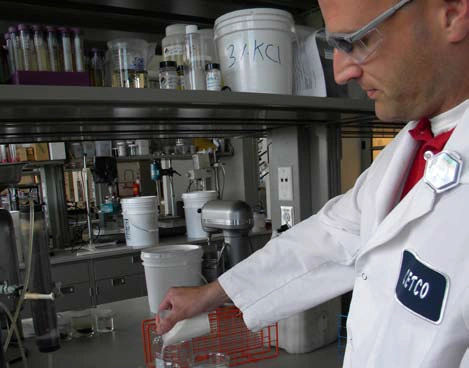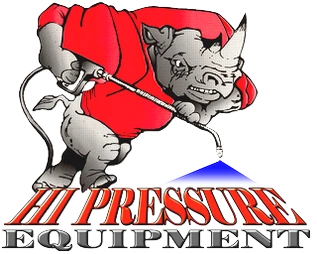Cetco Laboratory
Waste Water Analysis
CETCO Oilfield Services’ commitment to research and development has helped make us a leader in water treatment.
Our extensively equipped laboratory and team of scientists provide innovative products and wastewater treatment programs for industrial, municipal, pipeline, and oil production wastewater. Based on our evaluation of each customer’s
wastewater, we provide efficient and cost-effective treatment options using our specialized line of products while providing unsurpassed customer support.
CETCO Oilfield Services Research and Testing Laboratory performs a wide range of instrumental and wet-chemical analyses using state-of-the-art analytical equipment. Some of the laboratory’s capabilities include:

- Total Suspended Solids (TSS)
Water is pulled through a pre-weighed glass filter by a vacuum pump.The filter is dried and the final weight is recorded. Results arerecorded in parts per million (ppm) and 100 mls of waterare required for the test.
- Fat, Oil, and Grease (FOG)
Hexane extraction infrared analysis is based on EPA method 1664.Results are recorded in parts per million (ppm) and 100 mls of waterare needed for the test.
- Metals Analysis
Water is digested with acid in a microwave, filtered, and then analyzedwith an ICP (Inductively Coupled Plasma) Spectrometer, which iscapable of determining the presence and concentration of most metals.
- Total Organic Carbon (TOC)
Measures level of total organic carbon in water.(TOC) is a more direct and convenient expression of total organic contentthan the BOD or COD, but does not provide the same information and does not replace these tests.
- Chemical Oxygen Demand (COD)
A spectrophotometer is used to measure the chemical oxygen demand inwater. Results are recorded in parts per million (ppm) and 20 mls are requiredfor the test.
- Toxicity Characteristic Leaching Procedure (TCLP)
Determines the ability of elements to leach from a sludge. Sludge, acid, andDI (Deionized) water are mixed overnight and the resulting solution is filtered.The filtered water is then analyzed for contaminants of concern.
- Atomic Absorption (AA)
Used to measure the level of exchangeable or leachable elements in a sample.A solid, generally a clay, is digested, filtered, and analyzed on a flame spectrometer.
- X-Ray Diffraction (XRD)
Used to identify mineral components of a solid (i.e. bentonite, limestone,diatomaceous earth, etc). Two grams of material are required, but the test is non-destructive so the material can be returned or reused.
- X-Ray Florescence (XRF)
Used to identify the percentage of an element present in a solid. Resultsare recorded as a percentage, and 2 grams of the sold are required for the test.
- Thermo-Gravimetric Analysis (TGA)
Used to measure and identify the organic components in a solid. A smallamount of material is slowly heated, and its weight loss is measured.Results are recorded as a percentage, and less than one gram is required for testing.


